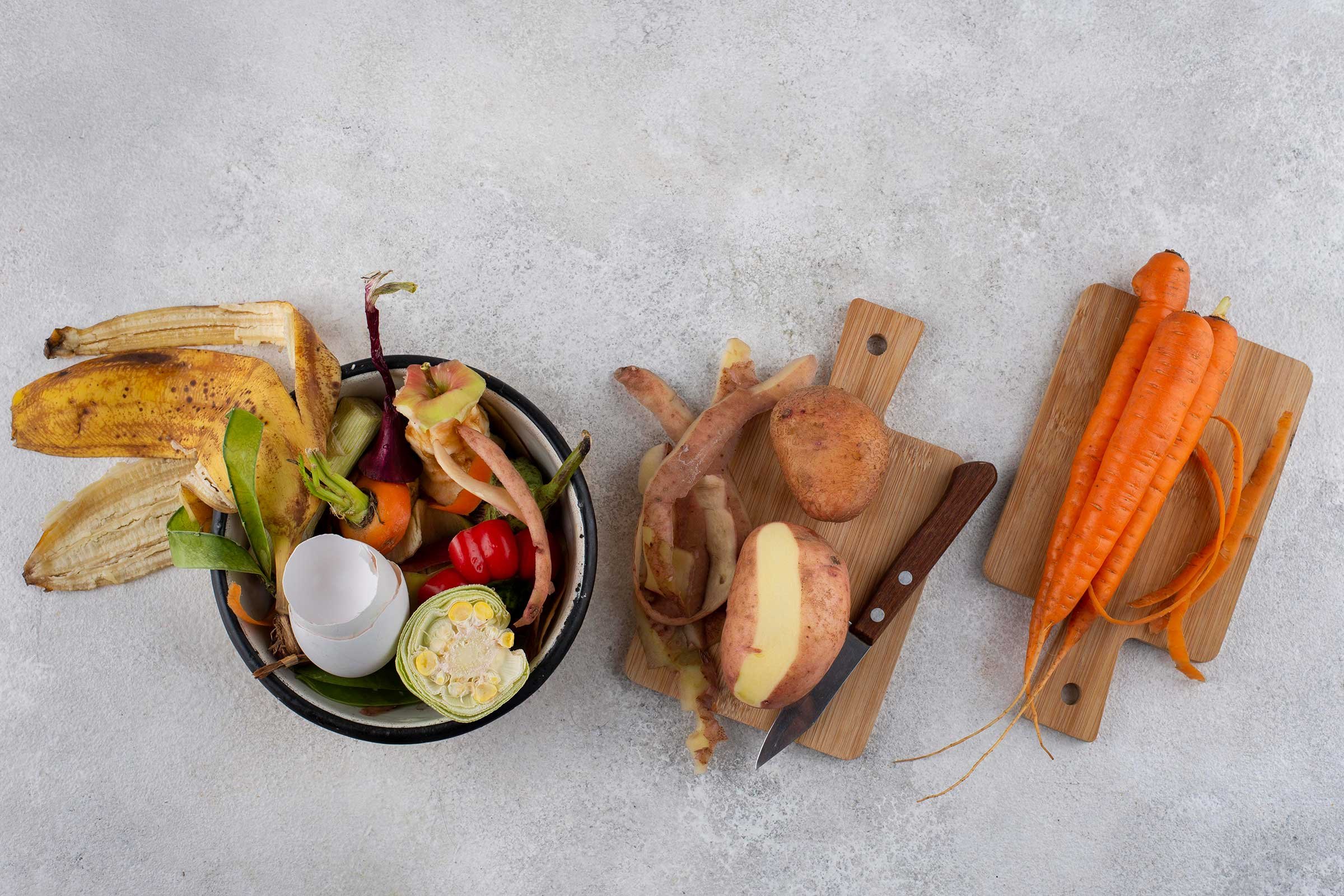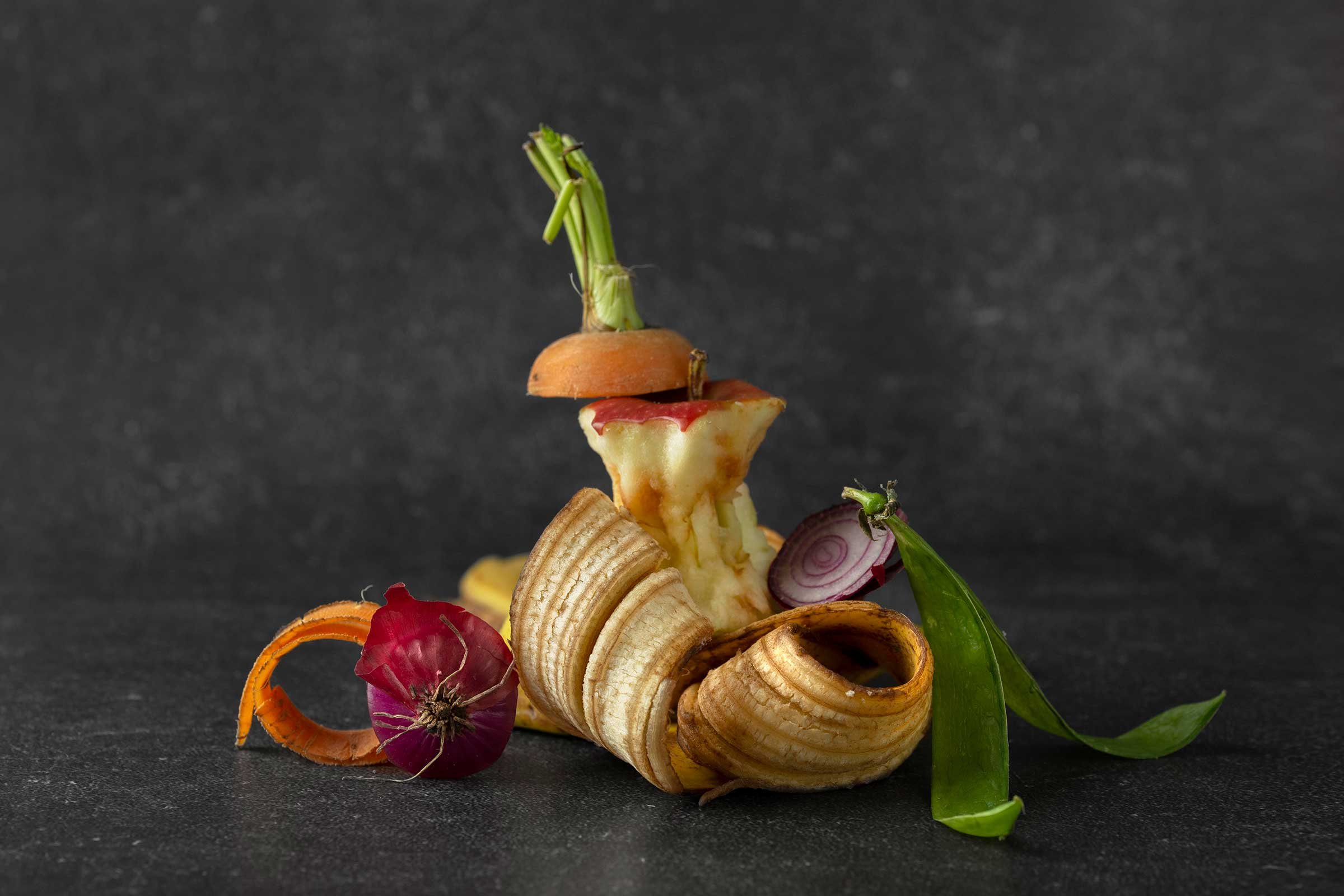Compost

California’s Attempt to Wrangle Our Waste
by Lisa Ludwigsen
It’s alive! Teeming with macro- and micro-nutrients, biological activity, and trace minerals, it could be argued that compost holds the mysteries from the natural world. The rich look, feel, and complex smell conjures all the dark, moist, wild places of the deep forest. What appears to be simple dirt actually adds life, plant nutrients, and vitality to the garden, farm, vineyard, and even rangeland.
For a long time, backyard composting was a back-to-the earth kind of thing. Save all those kitchen scraps to layer with grass clippings and dried leaves or small branches, keep it moist, and occasionally turn it to mix up the layers. What results is a powerful fertilizer and mulch to add back to the garden. It is low-tech and doesn’t cost anything. It really is garden gold.
And now, some very interesting developments are afoot in the world of compost, all starting with those basic kitchen scraps. Yes, compost has become exciting!
Kudos to you if you are making your own compost (check out our instructions in the sidebar if you want to begin). For those folks too busy or without adequate space to make our own compost, all those household scraps end up in a bin that is hauled away or taken to the local waste management company. The sheer volume of all that organic waste—called green material—has been identified as a key factor in many of our landfills reaching capacity, and is also a significant source of methane, a potent greenhouse gas. According to calrecycle.ca.gov, landfills are the third largest source of methane in California.
To reduce green waste in the landfill, a new California bill, SB 1383, now requires households and businesses to compost all food scraps, including meat, bones, and dairy, along with other biodegradable items like paper, organic textiles (think cotton sheets and towels), lumber, wood, and other items. It’s estimated that diverting this waste generated by households and businesses, including restaurants, will reduce the volume of organic materials in landfills by 75%. That waste can then become compost!
Working out the logistics is a big ask of waste management companies and their customers, but there is time to bring everyone on board. The bill was passed in 2016 by then-Governor Jerry Brown but will not be fully implemented until 2024.
The timing is good for farmers and ranchers. The chemical fertilizers used widely in conventional farming have become more expensive and less readily available due to supply chain issues. Commodity crop farmers have seen some fertilizer prices rise 300% since 2021, according to the March 2, 2022 issue of Modern Farmer. In response, some farms are now integrating compost into their soil nutrient mix because it is less expensive and can be produced domestically, from recycled waste, no less. Though the law has no requirement to provide free or low-cost compost to farmers and ranchers, local composting companies have provided rebates on purchases, as well as giveaways.
No-till farming is another method that incorporates regular use of compost. Most farms use tractors to turn the soil in preparation for planting, a practice that releases carbon into the atmosphere. A technique used in no-till farming involves letting a layer of biologically active compost condition the soil before planting, thereby keeping the carbon in the ground—a practice known as carbon sequestration. This use of compost also prevents erosion and retains moisture.
On a very large scale, research is showing that small quantities of compost, just a half-inch spread over swaths of rangeland, coupled with rotational livestock grazing, increases biodiversity of grasses and sequesters carbon by encouraging plants to develop deep roots and draw carbon out of the air. The research conducted by the Marin Carbon Project and others since 2010 has shown that, despite common thought on the deleterious effect of grazing on rangeland, grazing animals, within a carefully managed plan including the addition of compost, are important for stimulating the growth of grasses and breaking up soil as they move through an area. Areas not treated with that small quantity of compost were not as biodiverse. Read the data at www.marincarbonproject.org.
Locally, Cold Creek Compost in Potter Valley has been making compost on a large scale since 1995, when it became the first fully permitted compost facility between San Francisco and Oregon. It is one of the few composting facilities permitted to handle food waste, so it is well positioned to assist with the stream of organics that will need to be diverted from some landfills. The Cold Creek website is a good source of information on their process and compost, including nutrient analysis.
Whether you turn your household waste into garden gold or add your household organics to the effort to make compost available for farm and rangeland applications, what’s important is that we all do our part to help reduce waste. The serious climate issues on our doorstep present us with many opportunities to reconsider how we grow and eat food and deal with the waste that we create. Utilizing compost to improve our soil and reduce our reliance on chemicals is a positive piece of the solution. It is exciting, indeed!
How to Make Your Own Compost
If you would like to make your own garden gold, it just takes a little preparation and a small space. All you need is enough room to make a pile at least two feet from any structure.
To build the pile that will ultimately be compost for your garden, follow these basic guidelines:
Wet the ground that will be underneath the pile.
Place the first layer of twigs or pieces of woody product on the ground. This will provide some aeration at the bottom of the pile.
Alternate layers of green material, like grass clippings or animal manure, with shredded (1” to 2” in size) dry, carbon material, such as hay or dried leaves. The animal manure should be chicken or rabbit or other barn animal, not dog or cat feces (which can contain bacteria not eliminated through the composting process).
Keep layering, with green and dry carbon material.
Remember that your pile will lose volume as it cooks down, so the higher you make it, the more compost you’ll have in the end.
Thoroughly water the pile. It should be kept moist but not soaking wet. To that end, if you live in a location with significant rain, cover your pile with black plastic or a tarp of some kind.
You’ll notice that the pile will heat up after a few days. That’s the microbial action taking place. Keep the pile moist, like that of a wrung-out sponge, to keep the process going.
Turning the pile occasionally will increase the heat and quicken the process.
Add kitchen scraps and shredded dry ingredients when you have them, water them in, and keep turning. You’ll soon notice the material losing significant volume, up to 40%, as it breaks down and begins looking like soil. It is finished when you can no longer discern the individual ingredients of the pile and it looks and smells like rich soil.
The entire process will take between 6 weeks and 2 years, depending on the ingredients, the outdoor temperature, and degree of moisture.
Most backyard composters choose to gradually add layers to their pile, instead of creating the pile at one time and letting it sit without additional material. Called the ‘batch’ method, adding gradually takes longer but is often the most convenient. It’s quite rewarding to apply your homemade compost to your garden, creating a closed loop of sustainability in your garden without any outside inputs.
To purchase compost by the bag, check with your local hardware store or nursery. For a listing of businesses that either sell larger quantities of compost or accept material for composting, go to www.findacomposter.com
Lisa Ludwigsen is a writer and marketer working with food, farms, and family small businesses throughout Northern California. She has worked in organic agriculture, natural foods, and environmental education for over 20 years.


